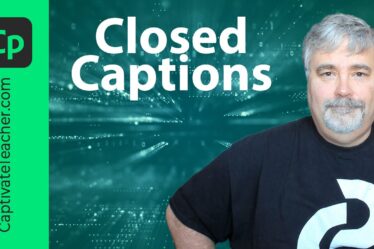
Thought Industries and Claire Schooley Consulting have published their 2021 State of Customer Education Report. Customer education, according to the report, is « an emerging paradigm for helping customers achieve success by teaching them how to get maximum value out of products and services. In many organizations, it represents a new department, team, and/or budget line, beyond and distinct from traditional Customer Success functions. »
The survey report looks at:
- What types of organizations are investing in customer education programs today
- What motivates their investments
- How those organizations assess current progress toward their customer education goals
- Their priorities for customer education in the year ahead
The Learning Guild recognizes the growing importance of customer education to business, to recovery from the pandemic, and to professionals in the learning and development (L&D) profession. I recently interviewed Barry Kelly, CEO of Thought Industries, about some key findings of the survey as they relate to L&D.
BB: The survey report says that « Customer Education is learner-focused, attuned to customers’ day to day needs and to where, when, and how learning best fits into their world. Increasingly, it’s also business-critical, as it helps organizations outperform at each step of the customer lifecycle—from building brand awareness to onboarding, retention, and net revenue growth. » Why do professionals in L&D need to get involved in it?
BK: I spoke at The Learning Guild event in Florida about four years ago. Talking to folks in L&D organizations I said, at some point, you’re going to get tapped on the shoulder and asked to help the marketing group or the customer success group to face learning out to the public, right out to the customer. We’re seeing a considerable amount of individuals working today in customer education who have come up through the ranks of internal corporate L&D. A lot of the very same skills and understandings are needed—the ability to create courseware and training, to be able to move individuals and grow them, increase professional understanding, essentially get success with technologies and strategy. That’s why I would say it’s relevant to your L&D audience. I think the principles of delivery are quite similar.
When we founded Thought Industries nearly eight years ago, my career was built up around external learning delivery so I was already focused on the non-traditional learner outside of an organization. Looking at the technologies and internal generalist LMS systems, when you face them around externally, there’s technology and features that are different; that are required in order to serve that market. Some of those things are associated with the ability to monetize, sometimes the ability to brand « white label » the ability to align and integrate the product with the marketing and sales cloud so that you can actually track customers through the entire lifecycle in terms of what they’re doing, the ability to be able to partition access by accounts. A lot of those things are very different in terms of technology. That’s ultimately why Thought Industries exists. We’re very excited about customer education. I think it’s a rapidly growing market.
Customer education organizations and departments inside companies have their remit essentially to first of all make sure that customers have business success. In the subscription economy that we’re in today, the customer has a choice of whether they want to continue to be your customer every month because their subscription is either monthly or annually. It’s not like on-premise technology where you sold the license and then you were good. In the subscription economy, individuals have a choice every month, every quarter, or every year whether to stay with you or leave. The way to retain those customers is to ensure that they’re having success with your technology. And that’s beyond just mastery of the technology itself. Because that’s only one part of it. I can have a great tactical understanding of a piece of technology or a product. But if I’m not having business success, I mean, I can buy Salesforce and configure it and know my way around, but having Salesforce configured doesn’t really mean that I’m going to be able to sell. So it’s incumbent on the organizations to ensure that the customers are having business success with the technology.
BB: In the research you conducted recently along with Claire Schooley Consulting (2021 State of Customer Education, linked above), you found that only 6% of organizations that responded believe 75% or more of their learners are adequately trained, down from 14% last year. That’s out of over 200 organizations from many sectors, weighted toward software but also including a substantial number from healthcare and manufacturing. Talk to me about the key areas where those organizations believe they need to improve their customer education.
BK: The key areas start with onboarding. So when a customer turns up and is being welcomed into the brand, the product is being configured and being enabled for launch. There’s a lot of things happening there for the customer—they’re growing their understanding of the product, they’re trying to fulfill their vision, they’re trying to build a bond with you as a company, and your technology and your product. And it’s a very critical time in which you’re able to build trust and partnership with an organization. Almost 70% of organizations that are delivering customer education are focused on the onboarding stage of the lifecycle question.
Beyond onboarding, the next two key areas where the survey said most organizations wanted to improve are education to help customers get incrementally more value and to help customers become masters of products and champions of the brand.
BB: Who delivers customer education in the organizations you surveyed?
BK: In the survey report, the most common was Customer Experience or Customer Success (40%), followed by operating as a standalone department (12%). L&D was 8%. Other departments ranged from Marketing at 6% down to Technical Services at 2%. In software companies, we saw relatively more Customer Education programs reporting into Customer Success or freestanding (76%). In manufacturing, on the other hand, programs commonly reported into Marketing or Operations (44%).
BB: What kind of deliverables, formats, and modalities are most often employed in customer education in 2021? This is probably most affected by pandemic restrictions.
BK: Those are not dissimilar to what you might find in any sort of training from any training organization, or internal training. In-person training is still taking a giant hit, but we will, I am sure, start to see that coming back. In our report covering the last year, 41% of the respondents were transitioning from in-person training to virtual training. The way I might answer the question, we’re seeing a lot of customers coming to us to diversify the modalities of learning because they want to get more reach, they want to get more expansion, they want to create a more dynamic experience, they want to reach the customer where they are. Those modalities are an online course, synchronous or asynchronous, virtual training using Zoom and WebEx, and the other tools used for virtual in-person training. And then the blended approach … we also see a lot of microlearning, especially in software. We see that because microlearning is in context and we have technology that allows individuals to embed learning right inside the software application. It’s that moment-of-need learning where I’m trying to download a report, and in past times I might just email support. Now I can actually get a short form education on the particular feature, how to use it best. Those are, I think the main modalities that we see. The beauty is that customers are creating all sorts of hybrids, one hour, two hours, 10 hours, three weeks, certifications, collaborations, peer learning, and a lot of organizations are running projects inside the technology.
BK: Are there differentiations in what you deliver, based on an organizational level?
BK: Absolutely. Especially in technologies that have a number of different roles, essentially, like role-based learning, delivery, as you know, and role-based pathways are something that we focus heavily on with our customers. So the way that you may onboard an analyst into technology might be very different than how you onboard the marketer, if it’s a marketing automation technology, for example, or also the business strategist on the account, the business owner, the person who owns the P&L or is trying to understand at a high level how the product is going to work for them. So absolutely. And we see that for some organizations that can be pretty broad—the breakdown of the different roles, different levels, content creators, designers, technologists, analysts, strategists, marketers, business owners, all of those different personas, their expectation of value and business success are different. So you have to curate what that learning pathway and what that learning journey is going to be for them.
BB: Does the impetus to start doing this come primarily from the top-down, or from within the organization itself? And maybe there’s no generalization you can make.
BK: That’s an awesome question. And it’s probably, you know, that’s the strategy part. I think, you know, that it makes this less formulaic sometimes. I think a lot of times there’s analysis on a metric that’s been used in customer success over the last six or seven years, called time to value. Time to value is used a lot in applications. It’s how quickly, in days and minutes and hours and months, can an organization get value from your product. And as an onboarding team, your job is to get them to first value as quickly as possible. You have to define who in onboarding is the critical individual role, an influencer on the account that needs to get value first. And I think you make that decision. And sometimes it might be the administrator or the owner. Other times, it might be the first team that’s in, it might be the integrators. So they might need to get value very quickly. It really depends on the use case, as to who has to get value first. And that’s, I think, a little that comes into the equation of how you define those pathways and prioritize.
BB: What’s in this for L&D? This seems to me to be a major answer to something that has been a question for years for L&D practitioners: how to get a seat at the table.
BK: I think the beauty of this, overall in terms of customer education, is that it’s really become associated with growth. And in terms of retention, churn from a customer is a lagging indicator of success. And I think organizations are much more proactive now about getting to customer success, understanding how that creates customer advocacy, how it creates a higher retention customer and allows you to expand accounts. One of the things that’s beautiful is that we’re starting to see organizations really influence the markets. So we’re seeing, as you talk about the relevance to your readers, more and more learning departments teaming up or being involved with marketing because with complex products, part of marketing is actually educating the customer, right? So this beautiful cross-section between marketing and learning that we’re seeing, and especially products with complexity. When we’re heavily involved, this is all usually business-to-business software, business-to-business products, where the market needs to be educated. We’re seeing high levels of engagement in terms of customer education with the market itself, even pre-sale.
There are channel partners and training, as we see these organizations evolve, and the channels and the ecosystem become really important to the growth of the organization. Those become key, too. So how can you make sure that you’re training ecosystem partners, resellers, regional resellers, OEM partners, franchisees, repair partners, integrators, and systems integrators become the extension of the customer education team to be able to continue to influence, certify, and manage the market. We’ve got customers who are doing that globally.
So you start to deal with the complexities of regions and localization currencies, because a lot of times learning isn’t always free. It becomes a profit center for an organization, you know, at scale. Those are the things that are particularly exciting about the evolution of this, and it is, I would say, if I was to talk a little bit about the report, you know, we’re just consistently starting to see the benefits, the investment, the visibility of customer education in the overall organization, and the importance of that organization, growing in stature year over year.
And that’s what we’re really excited about.


